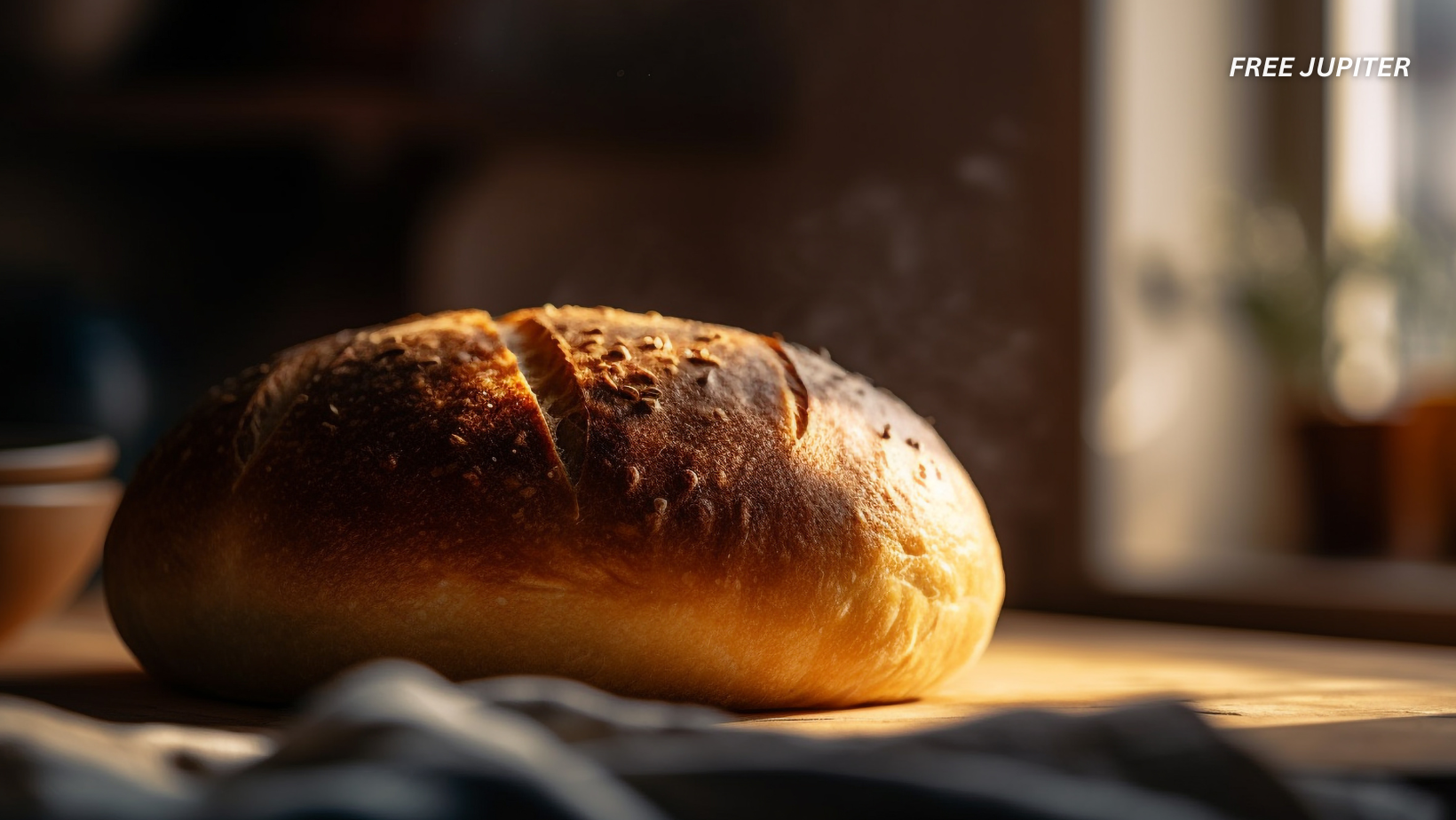Wandering through the bread aisle these days can feel like trying to choose a favorite song in a record store. There’s sourdough, multi-grain, gluten-free, rye, oat, spelt, ancient grain, and even charcoal-infused bread (yes, really). And with so many loaves stamped with labels like “heart-healthy,” “low-carb,” or “fiber-rich,” how do you actually know which one is good for you?
Three registered dietitians were asked the big question: What’s the healthiest bread for sandwiches? And to our surprise, they all came back with the same answer—100% whole wheat sprouted bread. But what makes this bread the nutritional breadwinner? And what should you really be looking for when selecting your next sandwich foundation?
Let’s break it down so you can skip the guesswork and bring home a loaf that actually loves you back.
Why Picking the Right Bread Matters More Than You Think
Sure, bread is a humble staple. But for something so simple, it can have a surprisingly big impact on your health.
The truth is, not all sandwich bread is created equal. Some loaves are nutrient-dense and made from real, whole ingredients. Others are processed, loaded with additives, and full of hidden sugars and salts that can quietly sabotage your health goals.
“Bread can either support or sideline your nutrition depending on what’s inside it,” says Brittany Brown, a registered dietitian based in Nova Scotia. “The ingredients and how it’s made really matter.”
That’s especially true for people managing things like blood sugar, digestive issues, or even just trying to feel fuller for longer. So what exactly should you look for?
Read more: Food Packaging Found to Release Microplastics Into Every Single Meal, Study Finds
How to Decode the Bread Aisle Like a Pro
1. Fiber First
Fiber is the real MVP of a healthy bread. Kaitlin Hippley, a registered dietitian and diabetes educator from Ohio, says her “non-negotiables” for bread include at least 3 grams of fiber per slice.
Why? Because fiber:
- Helps keep you full, so you’re less likely to snack unnecessarily.
- Supports digestion and keeps things “moving.”
- Helps regulate blood sugar levels, reducing spikes and crashes.
- Contributes to heart health and even supports weight management.
Think of fiber as the behind-the-scenes hero of your sandwich—it may not be flashy, but it plays a crucial role.
2. Watch the Sugar
Many people are surprised to learn that some sandwich breads are loaded with added sugar. This is especially true of breads labeled “wheat” or “honey wheat,” which sound healthy but often have sugar hiding in the ingredient list.
“Less added sugar means fewer energy crashes, fewer cravings, and a lower risk of inflammation and weight gain,” Hippley explains.
Aim for loaves with 0–2 grams of added sugar per slice—or better yet, none at all.
3. Keep the Ingredients Simple
Brown has a rule of thumb that’s as simple as the bread she recommends: “All you really need to make bread is grain, water, salt, and maybe yeast.”
If your bread has a long, complicated list of ingredients—especially ones you can’t pronounce—it’s probably not the most wholesome choice. Common red flags include:
- Preservatives like calcium propionate
- Artificial coloring or flavoring
- High-fructose corn syrup
- Added gums or stabilizers
These ingredients aren’t necessarily toxic, but they don’t bring any nutritional value to the table either.
4. Sodium Check
Sodium is another sneaky saboteur. Bread may not taste salty, but many brands pack in more than 200 milligrams per slice—which can add up fast if you’re eating a sandwich (that’s two slices!) or toast multiple times a day.
Alexis Law, a dietitian at Top Nutrition Coaching, suggests looking for breads with less than 200 mg of sodium per slice to help avoid creeping into high blood pressure territory over time.
So, What’s the Bread of Champions?
Drumroll, please… All three dietitians named 100% whole wheat sprouted bread as their top pick for the healthiest sandwich bread.
Why this bread in particular? Let’s unpack its superpowers.
✅ It’s Made from Whole Grains
Whole wheat bread uses the entire grain kernel—bran, germ, and endosperm—which means it retains more natural fiber, vitamins, and minerals compared to refined white bread. That includes:
- B vitamins for energy and metabolism
- Iron and zinc for immune support
- Potassium and magnesium for heart and muscle function
- Selenium and phosphorus for cellular health
Whole grains have also been linked to a lower risk of heart disease, type 2 diabetes, and certain cancers. Basically, you’re doing your whole body a favor.
Read more: Woman Cuts Out Ultra-Processed Food For A Week, And Is Shocked At What Happened To Her Body
✅ Sprouted Grains = Supercharged Nutrition
Sprouted bread takes it a step further. The grains in this bread are allowed to begin germinating (a natural process where the seed starts to grow into a plant) before they’re ground into flour.
This simple process unlocks extra nutrition:
- Higher in protein and fiber
- More omega-3s (the heart-healthy kind of fat)
- Lower in gluten, making it easier to digest for many people
- Lower glycemic index, meaning a gentler impact on blood sugar
- Reduced anti-nutrients, making minerals like iron more absorbable
Brown says, “Sprouted grains are at their nutritional peak—they’re more nourishing and satisfying than standard white or even basic whole wheat breads.”
Don’t Fall for the “Wheat” Trap
Just because a bread is labeled “wheat” doesn’t mean it’s healthy. Many so-called wheat breads are made from enriched white flour with just a splash of whole grain to make it look healthy.
- “100% whole wheat” or “100% whole grain” on the label
- Whole grain listed as the first ingredient
- 3 grams or more of fiber per slice
- Low or no added sugar
- Low sodium
Reading the label is key. If the ingredient list is long or starts with anything like “enriched flour” or “sugar,” put it back on the shelf.
Easy (and Fun) Ways to Use Healthy Bread
Once you’ve picked the right loaf, the sandwich possibilities are endless. Here are a few expert-approved ideas:
- Tuna and cucumber with spinach – Law loves the extra crunch and veggie boost.
- Tuna melt with pickled onions – Brown’s go-to for a warm and tangy lunch.
- Nut butter and banana – Comforting, nutrient-rich, and kid-friendly.
- Egg-in-a-hole sandwich – Brown’s favorite breakfast twist.
- Cottage cheese, tomato, and olive oil – Hippley’s Mediterranean-inspired toast.
- Avocado and egg with chia seeds – A fiber- and protein-rich power combo.
And if your bread goes stale? Don’t throw it away! Toast it with olive oil and herbs to make homemade croutons or crunchy salad toppers.
Read more: Fiber That Is Found In Everyday Foods Can Help Remove Forever Chemicals From Your Body
Final Thoughts: Bread Isn’t the Enemy
For years, bread has gotten a bad reputation in many “clean eating” or low-carb circles. But the truth is, bread isn’t the problem—it’s the quality of the bread that matters.
“A healthy sandwich bread can elevate a meal from average to nutrient-packed,” says Law. “And it’s not something to fear unless you have a true allergy or sensitivity.”
So if you’re standing in the bread aisle, feeling overwhelmed, just remember: reach for a 100% whole wheat sprouted loaf. It’s fiber-rich, full of plant-based nutrients, and keeps your energy steady without all the sugar or sodium.
And yes—brands like Dave’s Killer Bread or Silver Hills make great versions that are easy to find and reasonably priced.
Your sandwich is only as good as what it’s built on. So give it a strong, wholesome foundation—and enjoy every bite. 🥪
Featured image: Freepik.
Friendly Note: FreeJupiter.com shares general information for curious minds. Please fact-check all claims and double-check health info with a qualified professional. 🌱










